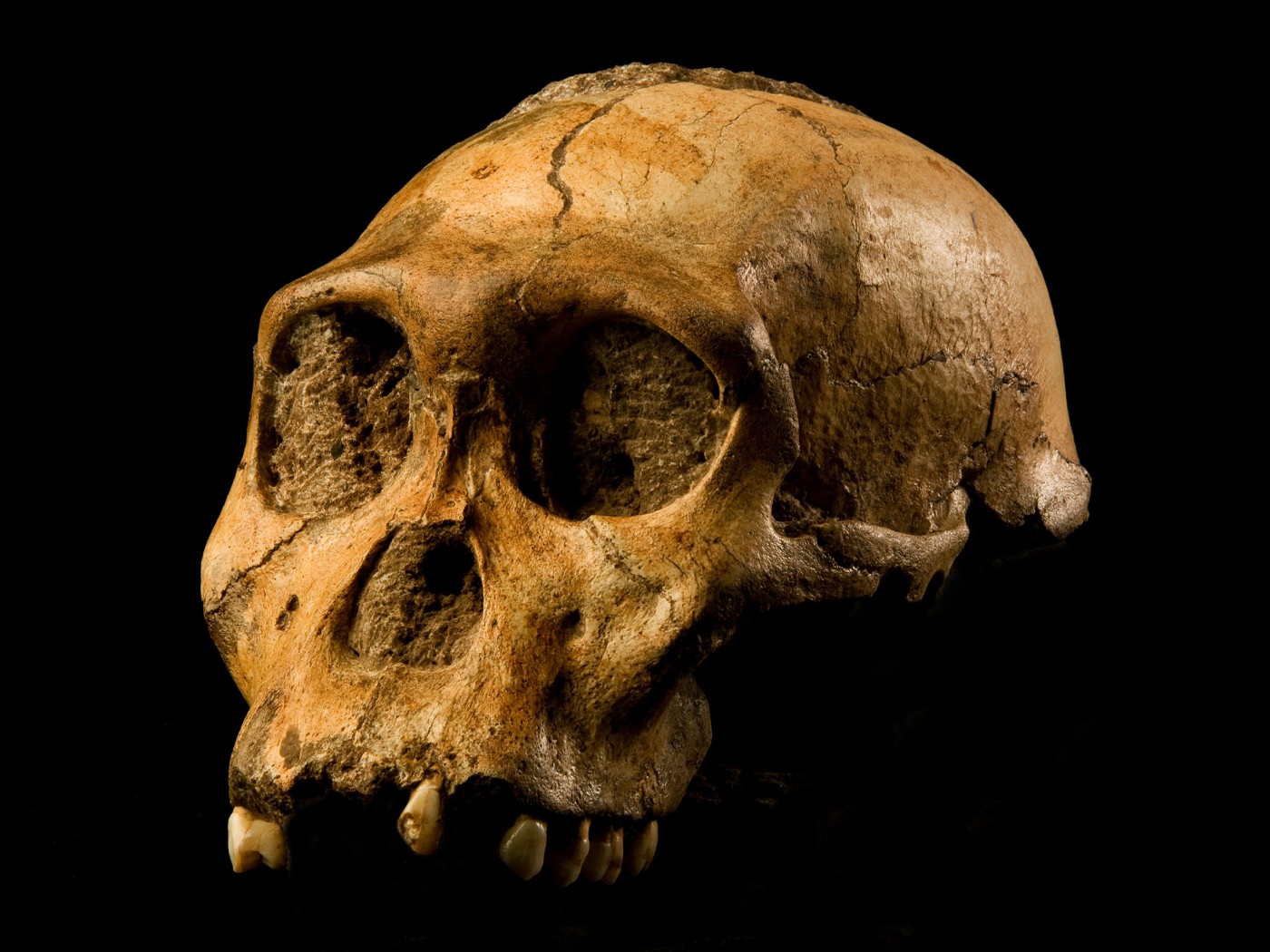Would God give us a body part that we don’t need?
Frequently, we face creation versus evolution choices in life, even though we are not always fully informed about the scientific facts that support biblical creation. Why? Because many choices in life don’t wait for all the facts.
Consider that years ago surgeons routinely removed tonsils. Many in the medical community viewed tonsils as nothing more than leftover nuisance organs, while parents viewed them as the source of a great deal of pain to their child (and children viewed them as an opportunity to trade for a bonanza of Neapolitan ice cream!). However, the evolution-based trend of elective tonsillectomies was discredited as a tragic fad of bad assumptions leading to bad conclusions—and led to many weakened immune systems. Tonsils and adenoids are not vestigial leftovers from a process of animals morphing into humans. Rather, tonsils and adenoids are valuable members of the human lymphatic (immune) system. Like fingers, you can survive without them. But unless they become dangerously infected—like gangrenous fingers—there is no good medical science reason to “amputate” them.1
As a matter of logic, a perfect Creator wouldn’t put parts into our bodies that we don’t need. Some of those facing tonsillectomies years ago elected to keep their tonsils for that reason—they believed tonsils were helpful body parts, to be appreciated and conserved for life—even before they learned relevant medical science facts about tonsils and adenoids. And later science eventually proved the evolutionist tonsil-bashers wrong.
We often face dilemmas that force us to test our creationist thinking, to make practical decisions before we learn the relevant science facts. We are tested by what we know, now, and also by what we should know, based upon our opportunities to learn. If we ignore or suppress the true facts—including what we actually know and what we should know—when we are put to the test, we do so “without excuse” (Romans 1:20).
This same kind of testing helps us in critiquing the claims of evolutionists, to test their finite thinking about topics of origins science. Origins science is primarily a type of forensic science—a science of learning and proving true facts about events of the past that are no longer observable. In forensic science, it is often important what people say and do before they learn additional information that influences them to “change their story.”
Testing Comparative Reliability of Conflicting Reports
This forensic principle is routinely recognized in evidence law. Imagine that an out-of-town motorist carefully made a U-turn, only to receive a traffic citation for an “illegal U-turn.” At first he protests that he made a careful U-turn on a solid green light. But he later learns that local law only allows a U-turn on a green arrow, and his “memory” changes. Which story should the judge believe?
Evidence law calls this the “recent fabrication” problem—distinguishing between words spoken before and after a potential influence to fabricate a different report in order to avoid a foreseeable consequence.2 Why trust the earlier report? Because a potential influence cannot affect behavior occurring before the influence exists. This is a basic law of causality logic: An effect cannot precede its own cause. Later-acquired information cannot be the cause of an earlier action.
Who Wrote Genesis?
While Christ refused to accommodate false traditions,3 He specifically recognized Genesis as a genuine book of Moses.4 That fact is authoritative enough for Bible-believing Christians. However, we can review one aspect of Genesis’ authenticity to further illustrate the “recent fabrication” evidence principle.
Apostates who reject Christ’s deity often reject Christ’s knowledge about who wrote Genesis (and the other four books of Moses). Such skeptics include early source critics—Jean Astruc, Karl Graf, and Julius Wellhausen—scholars whose speculations became popularized as the so-called “JEDP” (or “Documentary”) Hypothesis. They imagined that the authorship of Genesis through Deuteronomy was a conspiracy plot of priestly forgers and redacting editors, who fabricated piecemeal texts for backdating and attributed the supposedly illiterate Moses as the author in order to trick Jewish readers into accepting texts as God’s Word. Dressed in fancy academic vocabulary, this sacrilegious scenario tickled many profane ears. But, like science fiction, it had no forensically reliable foundation. Among other problems, the recent fabrication causality principle embarrasses the JEDP Hypothesis.5
JEDP skeptics claim that Moses’ five books were fraudulently fabricated by authors and editors who sanitized pagan creation myths, rituals, and folklore as late as the postexilic Persian period (500s to 400s B.C.). Available copies of the Mosaic books (transmitted by Masoretic scribes) were transmitted in Aramaic (Ktav Ashuri or “square”) script, learned in Babylon. It was only after the Babylonian captivity that the deported and later-born Jews used the Aramaic alphabet script—not the more ancient Hebrew alphabet (Ktav Ivri). So, JEDP skeptics argued that the Hebrew text itself was composed and/or edited during the postexilic period.5
But in contriving this blasphemous authenticity challenge, the skeptics forgot that Samaritans retained and copied the five books of Moses in the ancient preexilic Hebrew script (Ktav Ivri)—centuries before the mutually hateful split between the Jews and the Samaritans. The Samaritans’ copy of the books of Moses never bore the later Aramaic (Ktav Ashuri) script. Since the Samaritans themselves were deported in 722 B.C. by Assyrians, their copies of Moses’ books antedate both the Babylonian and Persian periods. The Nablus (or Abisha) Roll copy of the Samaritan Pentateuch, cherished today in Samaria, is written in a form of Ktav Ivri script, thus antedating the postexilic Jewish influence of Ezra and Nehemiah, who returned to Israel during the Persian period (with their Ktav Ashuri Hebrew text).5
In other words, JEDP advocates try to date the Hebrew Pentateuch’s text (what the Samaritan Pentateuch is copied from) to be centuries later than the ancient Samaritan copies made from it—an impossible case of an effect preceding its own cause!
Why would anyone choose the forensically untenable JEDP theory over Christ’s own view of Genesis? To escape the authoritative authenticity of Genesis.
But Christ is always right—Genesis is authentic, authoritative, and relevant.
Not everyone is faced with a choice of having their tonsils pulled or all-you-can-eat ice cream. However, all of us are confronted with situations that test our personal view of origins—our beliefs about who our Creator is, whom and what He created, why He created, how He created, and when He created—whether or not we really believe that Genesis is true.
How well do you handle being tested on these issues? Don’t be caught “without excuse”—prepare for the test (cf. Hebrews 11:3, 6). Thankfully, life is an open Bible exam.
References
- Bergman, J. and G. Howe. 1990. “Vestigial Organs” Are Fully Functional. Terre Haute, IN: Creation Research Society Books, 2-15 and 31-69, especially 37.
- See Federal Rules of Evidence, Rule 801(d)(1)(B), explained in Tome v. United States, 513 U.S. 150, 115 S.Ct. 696 (1995). To be admissible under Rule 801(d)(1)(B), the statement must have been made before the alleged improper influence/motive to fabricate occurs.
- Johnson, J. J. S. 1987. When Jesus Took Time Out to Bless the Children. Biblical History, 55. The article depicts how Christ disagreed publically with the Pharisaic teaching of Rabbi Dosa ben Harchinas.
- Morris, H. M. 2005. The Long War Against God. Green Forest, AR: Master Books, Inc., 132-133. These pages provide examples of Christ’s reliance upon Moses, as Christ incorporated parts of the books of Moses into His teachings, including Genesis 1:27 and 2:24. See also John 5:39-47, especially 5:46-47.
- Cooper, W. R. 2011. The Authenticity of Genesis. Portsmouth, UK: Creation Science Movement, 22-27. Citing, e.g., the British Library’s Samaritan Pentateuch manuscript Cotton Claudius B VIII (in Ktav Ivri script), donated by Ireland’s Archbishop James Ussher.
* Dr. Johnson is Associate Professor of Apologetics and Chief Academic Officer at the Institute for Creation Research.
Cite this article: Johnson, J. J. S. 2012. Tonsils, Forensic Science, and the Recent Fabrication Rule. Acts & Facts. 41 (6): 8-9.

















